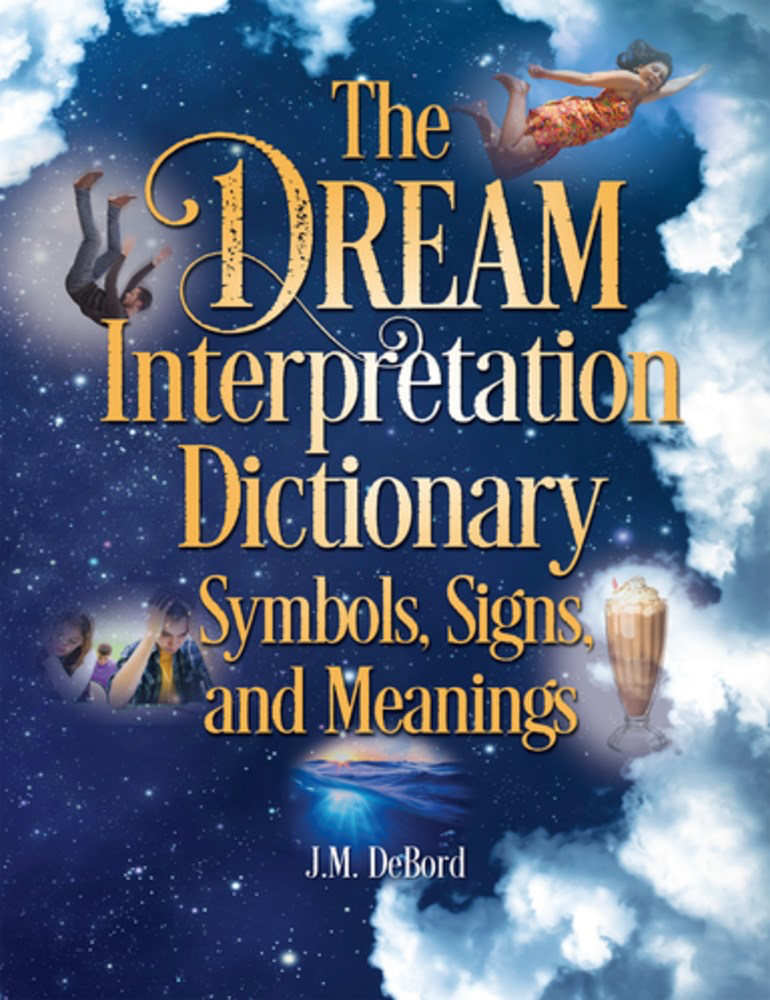Dream Dictionary

Asleep, having a nightmareDream interpretation is the process of assigning meaning to. Although associated with some forms of psychotherapy, there is no reliable evidence that understanding or interpreting dreams has a positive impact on one's mental health.In many ancient societies, such as those of and, dreaming was considered a supernatural communication or a means of divine intervention, whose message could be interpreted by people with these associated spiritual powers. In modern times, various schools of and have offered theories about the meaning and purpose of dreams. Most people currently appear to interpret dream content according to the of dreams in countries, as found by a study conducted in the, and.People appear to believe dreams are particularly meaningful: they assign more meaning to dreams than to similar waking thoughts.
Oct 22, 2018 Dreamer's Dictionary Robinson, Stearn, Corbett, Tom on Amazon.com.FREE. shipping on qualifying offers. Dreamer's Dictionary. As the book's title suggest, this dream dictionary has subject matters from A-Z. It covers everything that you could possibly think of. I keep it bedside so that upon waking from a dream, I can quickly look up the.
For example, people report they would be more likely to cancel a trip they had planned that involved a plane flight if they dreamt of their plane crashing the night before than if the Department of Homeland Security issued a Federal warning.However, people do not attribute equal importance to all dreams. People appear to use when interpreting their dreams.
They are more likely to view dreams confirming their waking beliefs and desires to be more meaningful than dreams that contradict their waking beliefs and desires. The ancient ( Tablet V pictured) contains numerous examples of dream interpretation.The ancient in have left evidence of dream interpretation dating back to at least 3100 BC. Throughout Mesopotamian history, dreams were always held to be extremely important for and Mesopotamian kings paid close attention to them., the king of the Sumerian city-state of (reigned c. 2144–2124 BC), rebuilt the temple of as the result of a dream in which he was told to do so. The standard contains numerous accounts of the prophetic power of dreams.
First, himself has two dreams foretelling the arrival of. In one of these dreams, Gilgamesh sees an axe fall from the sky. The people gather around it in admiration and worship. Gilgamesh throws the axe in front of his mother and then embraces it like a wife. Ninsun interprets the dream to mean that someone powerful will soon appear. Gilgamesh will struggle with him and try to overpower him, but he will not succeed. Eventually, they will become close friends and accomplish great things.
She concludes, 'That you embraced him like a wife means he will never forsake you. Thus your dream is solved.' Later in the epic, Enkidu dreams about the heroes' encounter with the giant. Dreams were also sometimes seen as a means of seeing into other worlds and it was thought that the soul, or some part of it, moved out of the body of the sleeping person and actually visited the places and persons the dreamer saw in his or her sleep.
In Tablet VII of the epic, Enkidu recounts to Gilgamesh a dream in which he saw the gods, and condemn him to death. He also has a dream in which he visits the.The king (reigned 883–859 BC) built a temple to Mamu, possibly the god of dreams, at, near. The later Assyrian king (reigned 668– c. 627 BC) had a dream during a desperate military situation in which his divine patron, the goddess, appeared to him and promised that she would lead him to victory. The and Assyrians divided dreams into 'good,' which were sent by the gods, and 'bad,' sent by demons. A surviving collection of dream omens entitled records various dream scenarios as well as of what will happen to the person who experiences each dream, apparently based on previous cases. Some list different possible outcomes, based on occasions in which people experienced similar dreams with different results.
Dream scenarios mentioned include a variety of daily work events, journeys to different locations, family matters, and encounters with human individuals, animals, and deities. Joseph Interprets Pharaoh's Dream (watercolor circa 1896–1902 by James Tissot)In, priests acted as dream interpreters. Depicting dreams and their interpretations are evident. Dreams have been held in considerable importance through history by most cultures.Classical Antiquity The constructed temples they called, where sick people were sent to be cured. It was believed that cures would be effected through by within the confines of the temple.
Dreams were also considered prophetic or of particular significance. Of Daldis, who lived in the 2nd century AD, wrote a comprehensive text Oneirocritica (The Interpretation of Dreams).
Although Artemidorus believed that dreams can predict the future, he presaged many contemporary approaches to dreams. He thought that the meaning of a dream image could involve puns and could be understood by decoding the image into its component words. For example, Alexander, while waging war against the Tyrians, dreamt that a satyr was dancing on his shield.
Artemidorus reports that this dream was interpreted as follows: satyr = sa tyros ('Tyre will be thine'), predicting that Alexander would be triumphant. Freud acknowledged this example of Artemidorus when he proposed that dreams be interpreted like a rebus. Middle Ages In, certain indicate that consist of three parts, and early recognized three kinds of dreams: false, pathogenic, and true. (654–728) was renowned for his Ta'bir al-Ru'ya and Muntakhab al-Kalam fi Tabir al-Ahlam, a book on dreams. The work is divided into 25 sections on dream interpretation, from the etiquette of interpreting dreams to the interpretation of reciting certain of the in one's dream. He writes that it is important for a layperson to seek assistance from an (Muslim scholar) who could guide in the interpretation of dreams with a proper understanding of the cultural context and other such causes and interpretations.

(Alkindus) (801–873) also wrote a treatise on dream interpretation: On Sleep and Dreams. In studies, (872–951) wrote the On the Cause of Dreams, which appeared as chapter 24 of his Book of Opinions of the people of the Ideal City. It was a treatise on, in which he was the first to distinguish between dream interpretation and the nature and causes of dreams. In, extended the theory of to encompass ' aspects, mental capacity, attitudes, movements and.'
's (1377) states that 'confused dreams' are 'pictures of the imagination that are stored inside by and to which the ability to think is applied, after (man) has retired from perception.' Ibn Shaheen states: 'Interpretations change their foundations according to the different conditions of the seer (of the vision), so seeing handcuffs during sleep is disliked but if a righteous person sees them it can mean stopping the hands from evil'. Ibn Sirin said about a man who saw himself giving a sermon from the mimbar: 'He will achieve authority and if he is not from the people who have any kind of authority it means that he will be crucified'.China A standard traditional Chinese book on dream-interpretation is the Lofty Principles of Dream Interpretation (夢占逸旨) compiled in the 16th century by Chen Shiyuan (particularly the 'Inner Chapters' of that opus).
Chinese thinkers also raised profound ideas about dream interpretation, such as the question of how we know we are dreaming and how we know we are awake. It is written in the Chuang-tzu: 'Once Chuang Chou dreamed that he was a butterfly. He fluttered about happily, quite pleased with the state that he was in, and knew nothing about Chuang Chou. Presently he awoke and found that he was very much Chuang Chou again. Now, did Chou dream that he was a butterfly or was the butterfly now dreaming that he was Chou?'
This raises the question of reality monitoring in dreams, a topic of intense interest in modern cognitive neuroscience. Modern Europe In the 17th century, the English physician and writer Sir wrote a short tract upon the interpretation of dreams. Dream interpretation was taken up as part of at the end of the 19th century; the perceived, manifest content of a dream is analyzed to reveal its latent meaning to the of the dreamer. One of the seminal works on the subject is by.The Present A paper in 2009 by Carey Morewedge and Michael Norton in the Journal of Personality and Social Psychology found that most people believe that 'their dreams reveal meaningful hidden truths.' In one study conducted in the United States, South Korea and India, they found that 74% of Indians, 65% of South Koreans and 56% of Americans believed their dream content provided them with meaningful insight into their unconscious beliefs and desires.
Dragonflies have three stages to their life: egg, nymph and adult.  One of the secrets to their success is how they mature. Dragonflies have been so successful over the years that the only difference between modern and ancient dragonflies is size.
One of the secrets to their success is how they mature. Dragonflies have been so successful over the years that the only difference between modern and ancient dragonflies is size.
This Freudian view of dreaming was endorsed significantly more than theories of dreaming that attribute dream content to memory consolidation, problem solving, or random brain activity. This belief appears to lead people to attribute more importance to dream content than to similar thought content that occurs while they are awake.
In one study in the paper, Americans were more likely to report that they would miss their flight if they dreamt of their plane crashing than if they thought of their plane crashing the night before flying (while awake), and that they would be as likely to miss their flight if they dreamt of their plane crashing the night before their flight as if there was an actual plane crash on the route they intended to take. 11 Not all dream content was considered equally important. Participants in their studies were more likely to perceive dreams to be meaningful when the content of dreams was in accordance with their beliefs and desires while awake.